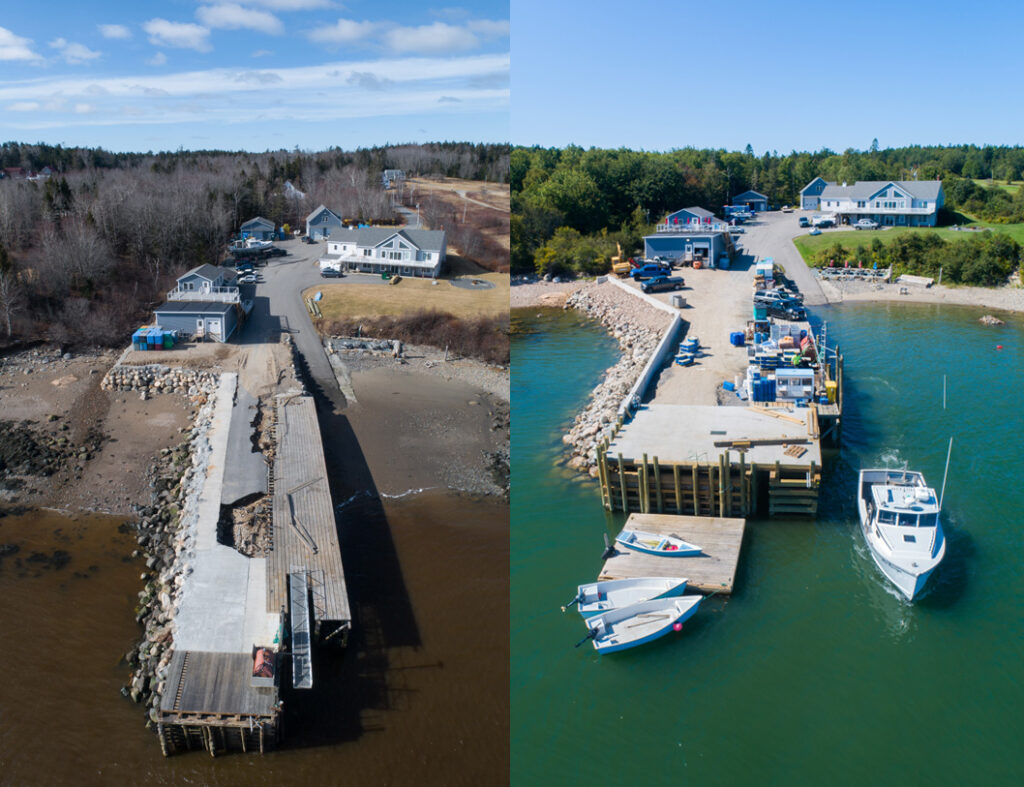Published by The Maine Monitor on March 7, 2025.
When last year’s winter storms devastated the coast, Sam Belknap’s family wharf on Round Pond harbor in Bristol was saved by its concrete floor. The floor, which Belknap’s family poured years ago when they put in a seafood processing room, provided enough weight to keep most of the wharf from floating away.
As the state braces for future storms, Belknap sees the concrete floor as an example of resilience technology at work.
More than a year after a series of December 2023 and January 2024 storms caused an estimated $90 million in damage to communities, the state is moving to strengthen its preparedness and resiliency for future storms.
Jessica Reilly-Moman, director of climate and community at the Rockland-based Island Institute, said that the storms have prompted a discussion about what is to come.
“It felt like a reckoning moment,” said Reilly-Moman. “It became clear that the impacts that coastal communities were facing are new and different.”
Unlike the typical Nor’easter storms that move through the Gulf of Maine during the winter, the three storms that hit the coast head-on more than a year ago took the less common Sou’easter track, according to a 2024 report from the Maine Climate Council.
(You may experience a paywall.)


